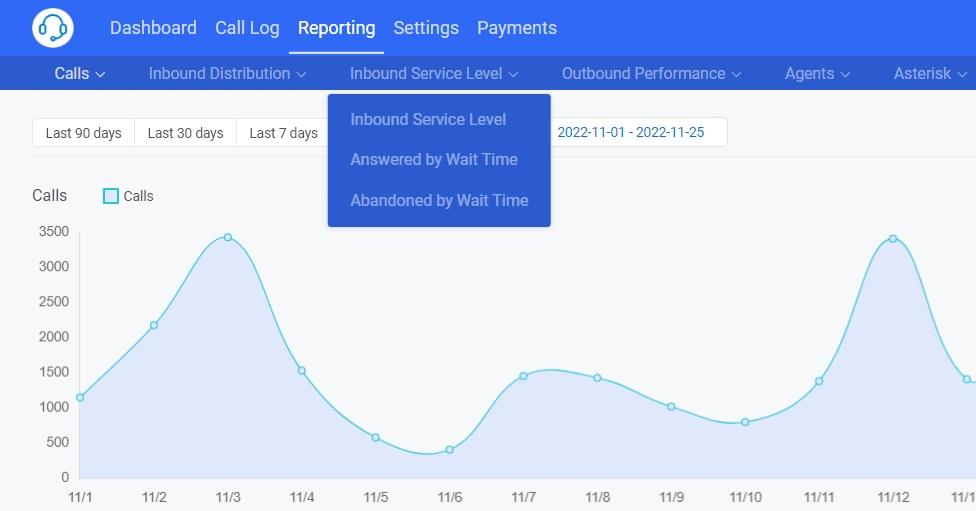SLA and ASA: a Misleading Indicator and a Good Contact Center Hallmark

Keywords: call center, quality, metrics, SLA, ASA, indicators, asternic, queuemetrics, monitoring.
Our life is full of acronyms. Say, it's quite common to sign an NDA, then to apply SLA, then to bring NPS to the forefront... you name it; surely you can continue the list. This article is devoted to such indicators as ASA, average speed of answer, and SLA that stands for service level agreement. For some CCs ASA is a metric number one. Our internal contact center monitors it too but is mostly and generally aimed at SLA, and here is why.
How it all began
Let's go behind the industry scenes: many CCs (not all but a large share though nobody confesses) are currently understaffed because of workload raising, staff turnover, or something else. This especially clearly manifested during the height of the pandemic; as for now unlikely one can say it got much better.
That's why a number of contact centers turned to average speed of answer (ASA) for indication of customer wait times. It includes all calls both those who already got through and those who are still waiting. It's correct in terms of math and does not cause questions. Questions appear when we construe what it shows.
Wonderful discoveries
Let’s imagine: we expect that
- there will be 150 calls for 30 minutes;
- average duration is 2 minutes;
- target answer time is 15 seconds;
- target SLA is 80%;
- 85% of an agent's time is speaking, hearing, and ACW.
According to the widely-used Erlang formula (we use it too), we need to allocate 19 agents. Everything goes as planned but suddenly other metrics start signaling: alarm! some clients wait 3 minutes and even longer! Seems to be nonsense (3 minutes are an order of magnitude more than 15 seconds)... or not really?
Based on a true story
Let's dig deeper and find out.
The luckiest clients hear hello immediately — their calls turned to be handled first. Some wait a bit longer but their calls are also snapped up quickly within 10 seconds. In the next 5 seconds another part will reach agents and so on. The longer, the less unanswered calls... but not zero anyway. It is like radioactive decay: an amount decreased twice and it repeated again and again but even 10 years we can see undecayed matter. The same to calls — there are those who are not lucky enough. Sure, people don't wait infinitely, sooner or later one hangs up and says some F-word.
To make the long story short, ASA is not a mirror for a typical CX, therefore, in our internal CC it's not a major metric though we take it into account too. Instead of ASA, we'd advise SLA: in simple terms, it's a number of calls answered for a certain time, for example, 80% within 20 seconds or 85% for 15. This is a more stable and reliable indicator.
So what now?
And why do some still stubbornly cling to ASA? Sure, it's common knowledge that ASA is not a silver bullet. The reason to use it comes from the problem we mentioned above: lack of agents and understaffing. When you have gaps in the staff, SLA says the only: wait time is (distressingly) long. As for ASA, it gives a rough idea about what's going on. Better than nothing but just a palliative anyway.
So if you're looking for a contact center and choosing, ask about ASA — the answer will give you much: an insight into if everything in the CC is under control, and proof there are enough agents to carefully deal with such delicate matters as your calls.
ASA is not and cannot be a self-sufficient indicator. No reason to monitor average time without longer waits. So share this sacred knowledge with your team and use tools which track both ASA and SLA. By the way, Asternic and QueueMetrics cannot do this but Softphone.Pro Team is able and even gives 2 weeks free of charge.

Be awesome, amazing, and deliver happiness to your clients. And we are here to make a contribution ☎
YOU MAY ALSO LIKE
Blog Yet another real correspondence with a client
Blog Based on a true story: a real dialogue with a client
Blog Slower but cheaper. Common call center practices review. Part 1.
Blog How to find growth points if you are a contact center
Blog Contact center as supermarket



